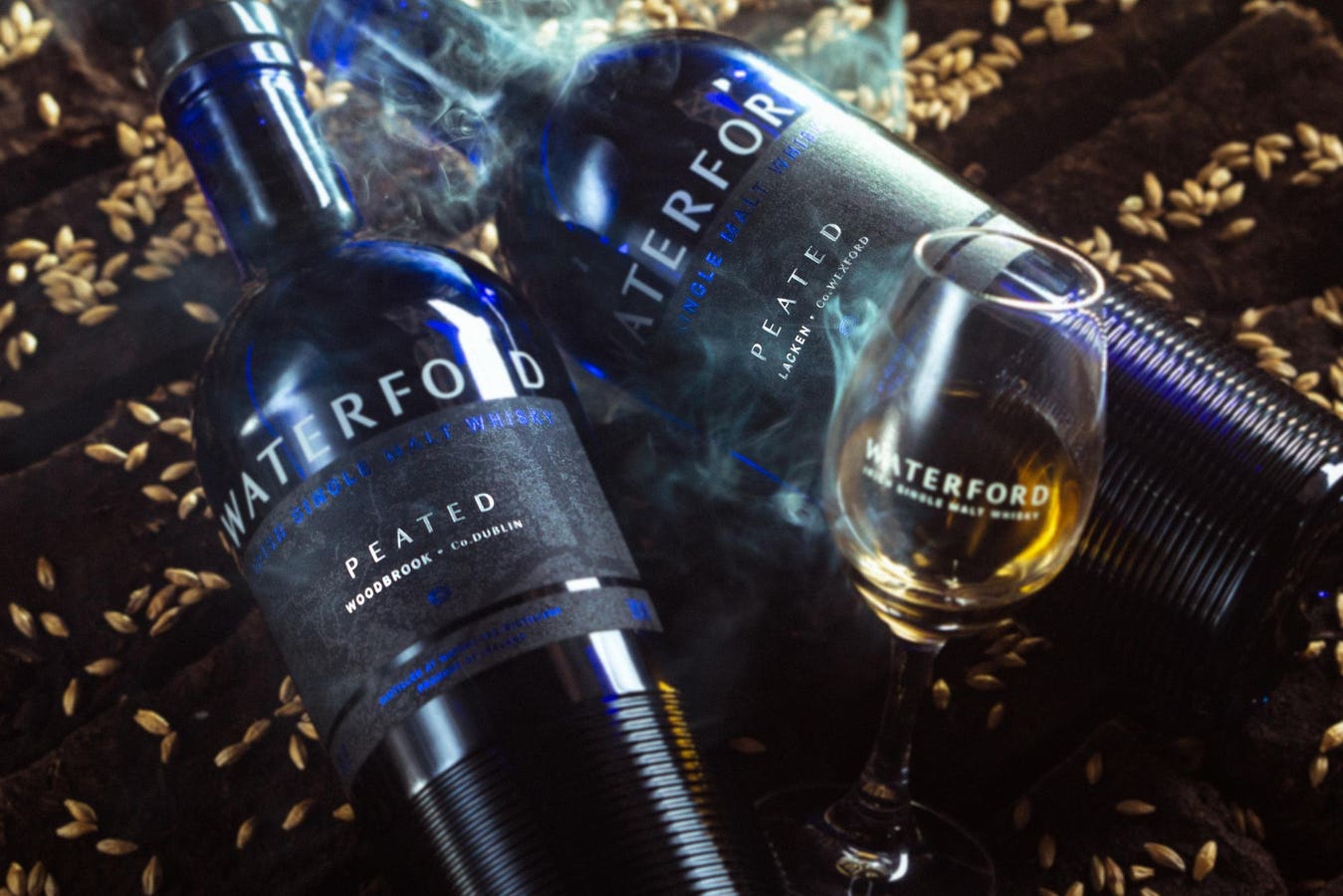Waterford Distillery, the whiskey maker fast becoming a go-to for unique and experimental single malts, has released two audacious new additions to their award-winning line-up, including what it claims are the most heavily-peated Irish whiskies ever made.
The Peated: Lacken and Peated: Woodbrook bottlings are said to have shattered records as the most heavily-peated Irish whiskies of all time, boasting remarkable phenol parts per million rates of 57ppm and 74ppm, respectively.
And as far as Waterford CEO and founder Mark Reynier is concerned, it’s just another step in the company’s commitment to honoring whiskey’s roots.
“Innovation, in our view, starts with the authentic, natural flavor of barley,” explains Reynier. “After all, there’s a lot out there. Over 2,000 flavor compounds, making it the most complex spirit in the world.
“Original Irish whisky flavors often included peat aromas—contrary to what a canny tour guide might tell you—so it was an obvious choice for us to eventually explore.”
Curious to see what the local, rural whiskies of yesteryear tasted like, Waterford initially experimented by reintroducing Irish peat with Irish barley. The process involved identifying two Single Farm Origin barley crops with Irish peat and sending them to Scotland (where peat malting is still very much a key part of whiskey production).
“For some years we managed to keep it a secret, until we introduced the first two peated bottlings last year—Peated: Fenniscourt and Peated: Ballybannon. Now, we’ve a further pair to compare and contrast, but with even more peat-reek.”
In describing Peated: Lacken and Peated: Woodbrook, Reynier emphasizes the significance of terroir, a term he often borrows from the world of wine. “You’d think peat would dominate, but the differences between the two single farms, their individual terroirs, create a rewardingly diverse tasting experience.”
On the Woodbrook, we’re talking dry spice and freshly-torched crème brûlée. On the Lacken, a unique shift between cigar tobacco and citric lapsang souchong.
“Providing an insight into how Ireland’s distinctive peat may have tasted centuries ago, the ‘fibric’ peat used in our bottlings is from a raised peat bog. It is brown; less decomposed than usual with roots and fibers, giving more fruity flavors; less petrolly and medicinal than the black ‘sapric’ peat of Islay, for example.”
For Waterford Distillery, transparency and authenticity are paramount. Reynier even implemented a “Téireoir Code” system to provide consumers with comprehensive insights into the journey of each whiskey, from barley to bottle, if they type said code into the company’s website.
“Primarily, the code acts as a verification and validation of each and every Waterford whiskey,” he says. “For the truly curious, it also offers the chance to explore the barley origins in a technical and creative way, be it the barley variety, growing season or terroir; all the way through to being able to listen to the sounds of the farm itself. It’s for those who want to know more.”
While the concept of terroir influencing whiskey isn’t widely accepted in the industry, Waterford is obsessed. Of course, the pursuit of bringing centuries-old processes back to life alongside winemaking concepts has not been without its challenges.
“Just about every barrier to returning to the old ways that could exist, does exist,” says Reynier.
Not least of which, the pursuit of Single Farm Origin barley. The process adds to the cost before the company can even think about distillation.
“We had to build a bespoke storage facility–known to us as the Cathedral of Barley–to store and guarantee the integrity of each farm’s harvest. Without it, we couldn’t make a claim to terroir.”
Nor could they produce Ireland’s first organic and world’s first biodynamic whisky, both of which the company has done in just eight years of business.
“We have had more serendipity than is probably fair, and a number of excellent farming and malting industry partners to make our vision a reality.”
In the near future, Waterford plans to introduce a core range of experimental Cuvée Concepts, with layered Single Farm Origins, to further expand its profile, too. These will be released in the U.S. first, where the company is in the process of expansion, and will become available next year to the rest of the world.
Reynier assures me, however, these experiments are not only for the sake of experimentation.
“There’s a purpose to what we’re doing which is centered around how this will impact natural flavor,” he says. “We’re exploring these old ways, how whisky used to be. Better barley, distinct terroirs, diverse and forgotten flavor origins, ancient ways of farming, long fermentation, good wood, all through the lens of a futuristic distillery—to let terroir talk and natural flavor shine through.
“Whether that’s successful or not, only time can tell.”
Read the full article here





